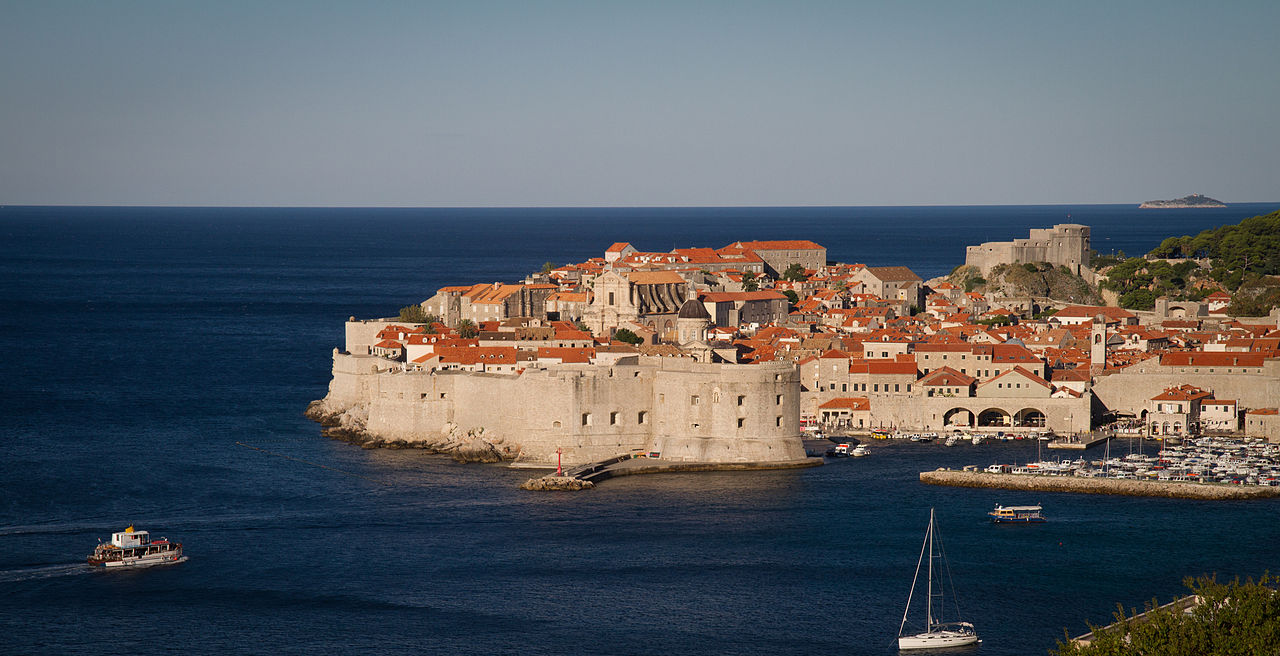 To Dalmatia (Dalmatia) belongs 375 km of the Croatian Adriatic coast, between the Kvarner Bay and the Bay of Kotor, and coastal islands. Spicy, the jagged chains of the Dinaric Alps form the high na 1500 m a barrier separating Dalmatia from Bosnia, interrupted only in two places: through the Krk river canyon in Knin and the Neretva valley in Mostar. Railroads run through both valleys. After the last glacial period, some of the coastal mountain ranges were flooded, creating the same high islands, like those found in the Kvarner Bay. Deep, the sheltered inlets between the islands are a paradise for sailors.
To Dalmatia (Dalmatia) belongs 375 km of the Croatian Adriatic coast, between the Kvarner Bay and the Bay of Kotor, and coastal islands. Spicy, the jagged chains of the Dinaric Alps form the high na 1500 m a barrier separating Dalmatia from Bosnia, interrupted only in two places: through the Krk river canyon in Knin and the Neretva valley in Mostar. Railroads run through both valleys. After the last glacial period, some of the coastal mountain ranges were flooded, creating the same high islands, like those found in the Kvarner Bay. Deep, the sheltered inlets between the islands are a paradise for sailors.
In the cities, such as Zadar, Sibenik, Trogir, Split, Hvar, Korcula and Dubrovnik's historical monuments lie in a strikingly beautiful setting, naked peaks, green valleys and clear sea. The ferry ride from Split to Dubrovnik is one of the greatest attractions in Europe. Half of Croatian wine is produced in the vineyards of Dalmatia. The warm sea current flowing north along the coast makes it, that the climate of Dalmatia is mild – warm in summer, and humid in winter. It is much warmer in Dalmatia than in Istria or the Kvarner Bay, you can bathe in the sea here until the end of September. It is a real Mediterranean paradise.
Unfortunately, Dalmatia suffered a lot during the war in the former Yugoslavia. This is especially true of Zadar and Dubrovnik, which survived heavy artillery fire over the years 1991 i 1992. Missiles also fell on Šibenik and Split. Most of the material damage has already been repaired, and the region is completely safe, but some hotels, restaurants or museums may be closed. On the other hand, compensation for these inconveniences is great kindness towards tourists. People are usually happy to talk about their experiences over the years 1991-1992, and such direct relations undoubtedly give the journey a whole new dimension.
Jadrolinija ferries continue to follow the lovely route along the coast from Rijeka to Dubrovnik. To Zadar, Trogir, Split, Hvar, Korcula and Dubrovnik can be easily reached by bus or boat. With time, it will undoubtedly get crowded again, but for now, you can admire the historic stone towns and the beautiful coast almost in solitude.
Story
Illyrian tribes settled here approx. 1000 r. p.n.e., and w IV w. p.n.e. the Greeks came, who established colonies on Korcula, Hvar and in the Salon. When the interests of the Illyrian and Greeks began to conflict, there was a Roman intervention and after 74 years of wars, w 155 r. p.n.e. The Romans subjugated Dalmatia. In Zadar, Salon and Split have survived the ruins of Roman buildings. The current inhabitants are descendants of the Slavic tribes, who settled here in the 6th century.
Medieval Dalmatia was under the rule of Venice and Croatia. W 1409 r. The Venetians purchased Dalmatia from Louis of Naples, the Hungarian-Croatian king. The country remained under their rule until 1797 r., until the conquest of Venice by Napoleon. Most of the coastal towns have a clear Italian influence, which is in contrast to the Turkish influence in cities located several dozen kilometers inland. Thanks to diplomatic efforts, Dalmatia finally fell to Austria and remained under its rule until 1918 r.
W 1915 r. Britain and France have promised the northern part of Dalmatia to Italy, in return for joining the First World War. After the war it was established, that the Italians will go to Istria, Cres, Lošinj, Zadar and Lastovo, a (the rest of the country. W 1941 r. Mussolini annexed all of Dalmatia, but in 1947 r. Dalmatia was formally ceded to Yugoslavia along with its territory, which Italy received from Austria in 1920 r.